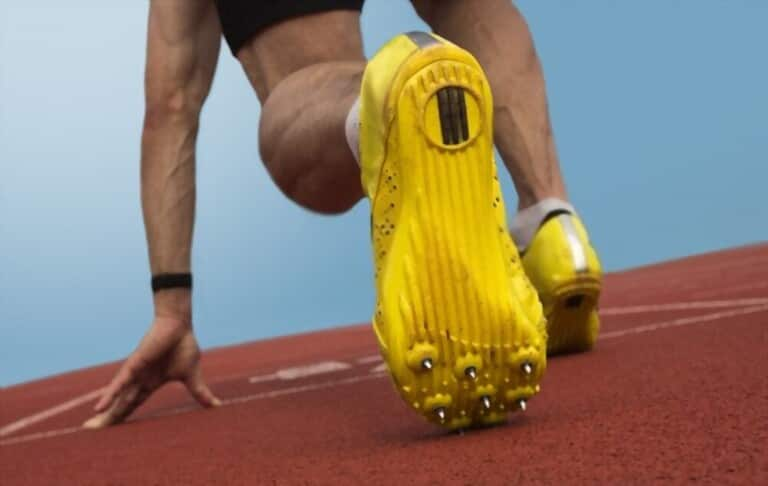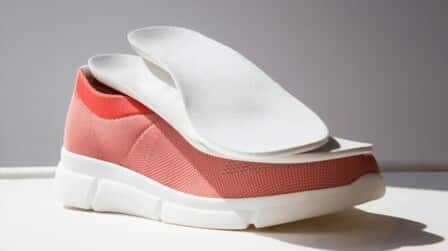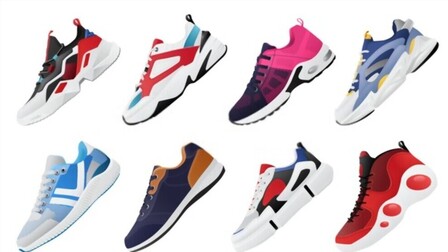You could be considering a pair of running spikes if you're planning to run cross-country or go to the track to increase your endurance. Knowing which technique to use for short sprints, medium distance running, and long distance running might be challenging. The information you need to determine the ideal pair of running spikes for you is provided below.
How to Choose Running Spikes
Choosing the proper pair of track spikes could seem difficult to someone who is new to track and field, but it doesn't have to be after spending some time studying which spikes will work for each event. A lighter and stiffer pair of shoes can help you improve your timings over any distance; there is no magic or witchcraft associated with track spikes. Each category of races will have specific spikes made by a number of manufacturers, and any running specialty store will have staff members knowledgeable about the advantages and drawbacks of each type.
For instance, sprinting spikes will encourage running on the toes to produce the most forward momentum throughout the event. They will feature a rigid plate below the entire foot. These shoes' drawback is that they are inappropriate for extended races since the footstrike will prioritize power over economy. The user will be able to employ distance and mid-distance track spikes across these lengthier races thanks to their tiny heels and limited foot cushioning, on the other hand. Here are some factors on how to choose running spikes you should know.
Spindle spikes
Sprinting spikes work well for 100- to 400-meter sprints at high speeds on a track. The lightest running shoe available, they are intended to put the runner on their toes and often have rather sharp heels with little to no padding. The front spike plate will contain the most pins so that it can withstand greater pressure and offer the greatest amount of traction.
Spikes at long distances
These running spikes are ideal for competitions lasting between 1500 and 10,000 meters since they offer the finest cushioning while yet feeling light. Additionally, they lack some of the shorter distance spikes' more forceful spike plates.
They are constructed of more robust, but heavier, materials because they are intended to withstand greater forces for longer periods of time. Long and medium distance spikes may occasionally be combined.

Spikes at middle distance
Middle distance running spikes, while still being relatively light, will have extra padding at the heel for more cushioning across an 800 to 1500 meter distance. They allow for a more moderate pace since they are less stiff than sprinting spikes and because the spike plate is not as far forward on the toe.

Trans-national spikes
These spikes are designed for cross-country running on grass and have a little more cushioning than your standard track spike. These are made with stronger ankle support and a more stable fit for rough terrain, and they are typically worn with longer spike pins.

The Event
The event is also an important element in list factors on steps how to choose running spikes you have to know. Identify the discipline in which the athlete is participating. This should be clear to high school and older track athletes during the first several weeks of practice, and most likely before the first competition. Event specialization can not be very clear to younger athletes who may still be in the formative stages. The wisest decision would be to err on the side of caution and cushion, and pick a spike suitable for distance competition if there is no specialized specialty for young competitors.

This has the additional advantage of giving the athlete the freedom to select the competitions they like in the future. A younger athlete may be at a disadvantage utilizing sprinting spikes for events like the 400 m if they have not fully developed these muscles yet. Sprinting spikes demand powerful lower legs to stay on the ball of the foot.
Barge in
Before racing with track spikes, be sure you break them in. Racing in brand-new spikes without any break-in can be dangerous. Brand-new spikes surely have some hot spots or high friction zones. Track spikes will adapt to the foot better after three to four light workouts or sets of strides, and if there are any problem areas, using petroleum jelly or another anti-chafe substance will assist to resolve the situation on race day.
Spike total
Depending on the intended function of the shoe, the spike plate in a pair of track spikes will contain a different number of spike pins. The standard for sprinting spikes is eight, which is the most currently permitted. Less will be present in distance spikes, often between 5 and 7. Never wear the track spikes without first inserting the spike pins or blanks. It doesn't take much, like a little particle of gravel, to sever the threads in the hole and prevent the essential insertion of spikes.
The Advantages Of Running Spikes Over Traditional Running Shoes
Choosing whether a racing spike or a conventional training shoe works for you may make a big difference in anything from sprinting to distance events in track and field to cross-country races. While the lightweight and strong grip of running spikes might improve performance, a more cushioned, more supportive training shoe will provide you considerably better injury prevention.
Running spikes are typically associated with sprinters because they need the lowest weight and intense grip that spike footwear provides. Even though the word "spike" is used to describe the shoe, the spikes are really ceramic or metal screws that have been sharpened. Spikes are designed for use in cross country racing on off-track, dirt and grass surfaces as well as in sprint, middle distance, and distance events on the track.
A sprinter runs practically the whole time of their competition on their toes, hence the lack of any padding in the spike adds very little weight. While still having the pointed spikes on the bottom, a middle distance spike does include a tiny degree of cushioning in its heel. This is because your heel hits the ground harder the farther you run. Due to the increased heel striking, a distance or cross-country spike does offer some cushioning from the mid-foot through the heel, but only little.
The typical running training shoe may assist you more by offering greater stability and cushioning, but it has disadvantages for racing due to its larger weight and bulkiness. A suitable training shoe offers additional protection and is made for your specific biomechanics since every foot strike as you run equals three to four times your body weight on contact.
Conclusion
How rapidly the track spikes degrade depends on how often racing takes place as well as the event for which the spike is intended. Every two seasons is a decent rule of thumb to replace them. Even while it would seem like this could get pricey, it's significantly less expensive than being hurt while racing in a set of track spikes that are beyond their prime. Finding end-of-season discounts for the same model or buying it from an internet wholesaler can help cut the price in part. If you have any questions regarding the differences between new and old spike models, speak with a staff member at a running specialty store before making the decision to upgrade your track spikes. Hope above information on steps on how to choose running spikes will help you.













